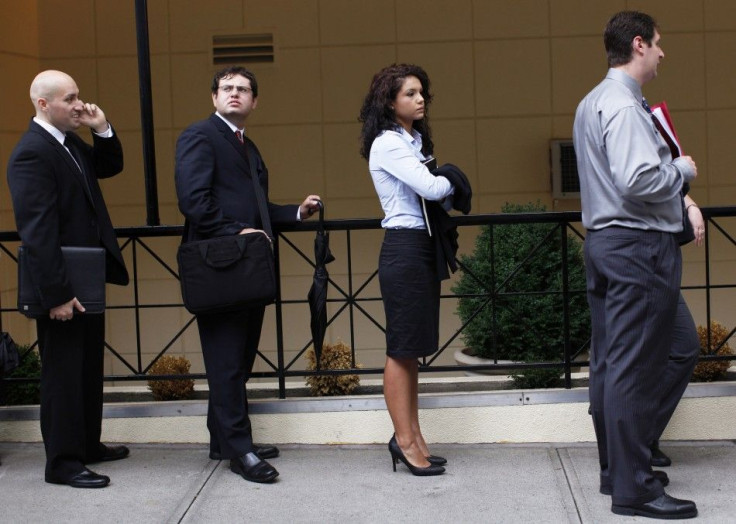More Than 30 Million Americans Unemployed: Another 3.8 Million Seek Unemployment Benefits

Unemployment claims rose for the sixth straight week as a result of the coronavirus pandemic, with 3.8 million Americans filing initial claims and bringing the total to nearly double the number of unemployed during the Great Depression of the 1930s, the U.S. Department of Labor reported Thursday.
“Another 3.8 million Americans filed new claims for unemployment benefits last week,” Mark Hamrick, senior economic analyst for Bankrate, said in a statement. “That measure, shockingly high under any circumstances, means that the total number of new claims is 30 million since the pandemic and economic slowdown erupted."
Economists say the unemployment rate for April could reach 20%, which is the highest rate since the Great Depression, which reached a rate of 25%, the Associated Press reported. During the Depression, 15 million Americans were without jobs.
The unemployment report followed Wednesday's release of first quarter results for the gross domestic product. The Commerce Department reported the economy contracted 4.8% just two weeks into pandemic mitigation efforts. Estimates for the second quarter contraction range as high as 40%.
“The United States hit a grim milestone that just months ago seemed unimaginable: More than 30 million workers, or 1 in 5 members of the covered workforce , have lost their jobs and filed for unemployment in the last six weeks,” Andrew Stettner, senior fellow at the Century Foundation and one of the nation’s leading unemployment insurance experts said in a statement.
“The COVID-19 crisis has made us accustomed and de-ensitized to previously unthinkable phenomena, but today marks a tough reality for our country and for American workers .”
Last week more than 4.4 million workers filed for unemployment benefits, leaving as many as 26 million Americans jobless over a five-week period when the coronavirus outbreak began closing businesses, causing a mass furlough of employees.
“We saw economic activity fall off dramatically well before any state issued a stay-at-home or shelter-in-place order,” Diane Swonk, chief economist at Grant Thornton and advisor to the Federal Reserve posted on Twitter. “The fear is real of infection and not abated. We may work but not return to play regardless of changes in shelter in place orders anytime soon.”
We saw economic activity fall off dramatically well before any state issued a stay at home or shelter in place order. The fear is real of infection and not abated. We may work but not return to play regardless of changes in shelter in place orders anytime soon.
— Diane Swonk (@DianeSwonk) April 30, 2020
The states with the highest level of unemployment were reported in Michigan, Vermont, Connecticut, Pennsylvania, Nevada, Rhode Island, Washington, Alaska, New York, and West Virginia.
The largest increase in unemployment claims occurred in the states of Florida, Connecticut, West Virginia, Louisiana, and Texas, while the states of New York, California, Michigan, Georgia and Washington saw the number of unemployment claims decrease.
The key issue for policy makers is to not become complacent as PPP grants bring workers back. COVID19 hit the economy hard and will be a major drag on overall economic activity until the virus is tamed. That can not happen as fast as anyone would like and will require more aid.
— Diane Swonk (@DianeSwonk) April 30, 2020
“The key issue for policy makers is to not become complacent as PPP [Paycheck Protection Program] grants bring workers back,” Swonk tweeted. “COVID19 hit the economy hard and will be a major drag on overall economic activity until the virus is tamed. That cannot happen as fast as anyone would like and will require more aid.”
© Copyright IBTimes 2025. All rights reserved.





















